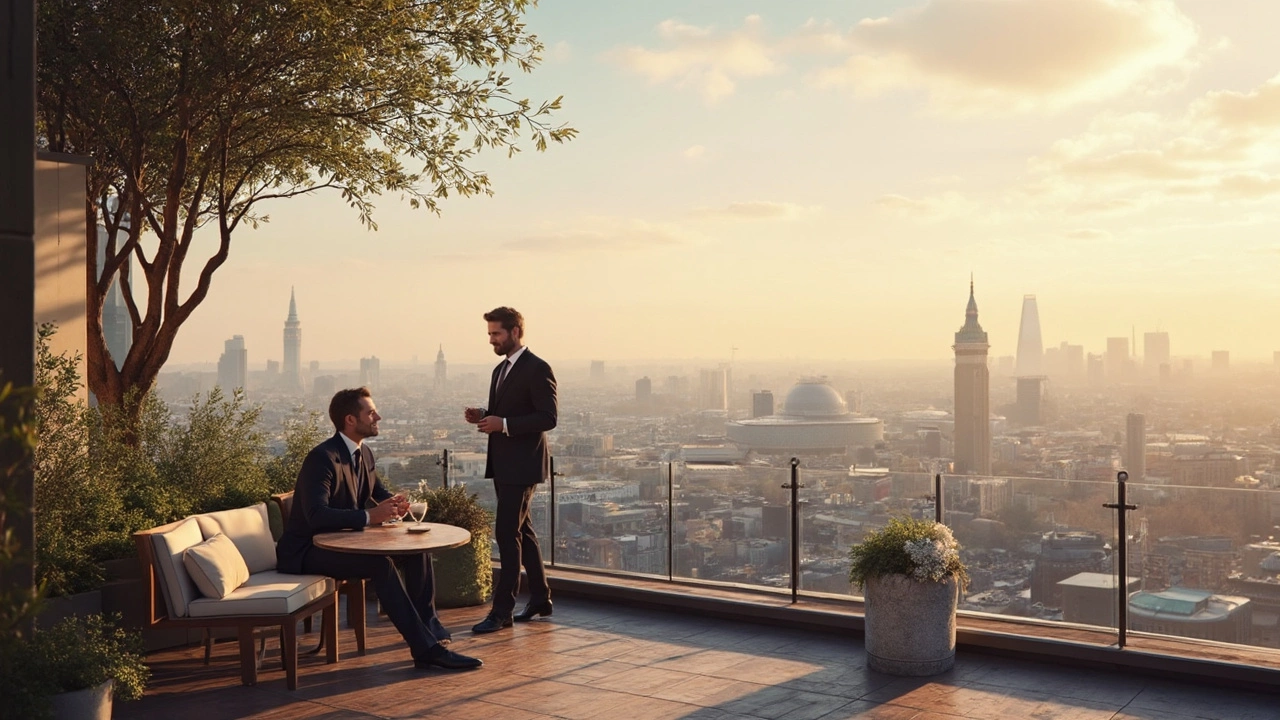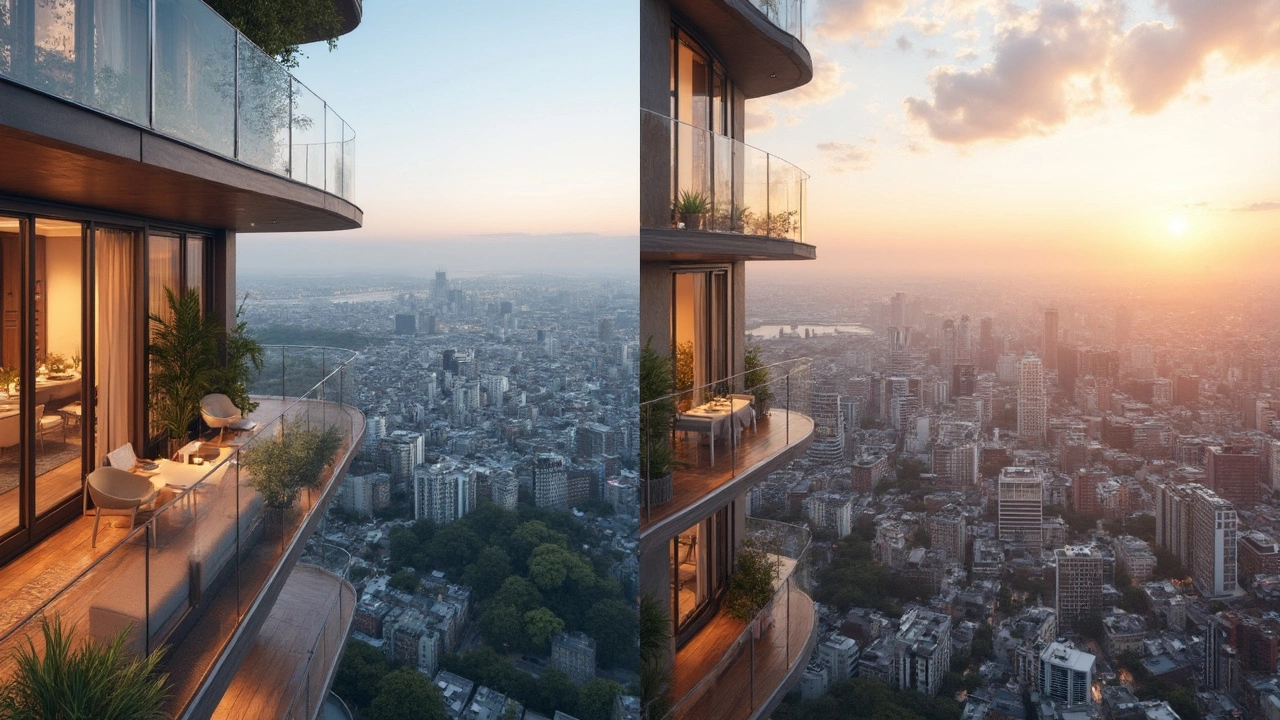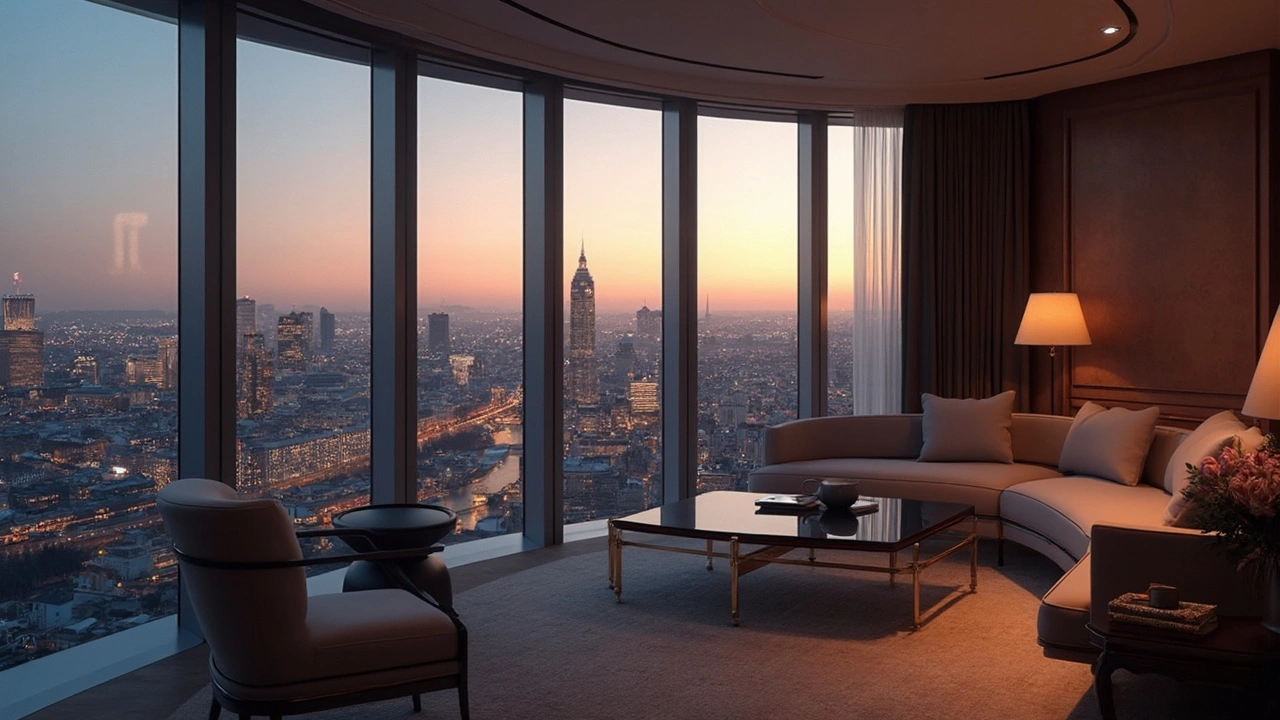If you hear someone say they live in "the penthouse," they're talking about the top level of an apartment building—but it's not always that simple. In the world of luxury apartments, the words people use for the highest floor matter almost as much as the views from up there. Most folks immediately think "penthouse," and, honestly, that's the go-to term in almost every high-end building. But some places call it the "Sky Residence," "Crown Suite," or even just the "top floor unit." Why? Because penthouse sounds fancier, and branding matters a lot in real estate.
Living up high isn't just about bragging rights. The top floor usually means more privacy, fewer neighbors above you making noise, and views you won't get anywhere else in the building. Some places sweeten the deal with private terraces, higher ceilings, or swankier finishes. But don't just get hooked by the name—what you actually get depends on the building and the developer. Always check, because some so-called penthouses are just regular units plus a higher price tag!
- What Do You Call the Top Floor?
- Why Are Top-Level Apartments Special?
- Is a Penthouse Always on the Top?
- The Real Perks (and Drawbacks)
- Choosing the Right Top-Floor Unit
What Do You Call the Top Floor?
The term for the top level of an apartment building isn’t always set in stone. The classic word you’ll hear is penthouse. This is the most recognized term, especially in luxury circles. But developers and property managers sometimes get creative because “penthouse” carries a certain luxury vibe that sells.
Here’s a breakdown of what buildings often call their top-level units:
- Penthouse: The original term. Usually means the best views and the largest floorplans, often occupying all or part of the roof level.
- Sky Suite / Sky Residence: A newer spin on the penthouse idea, especially in high-rise towers.
- Crown Suite / Tower Suite: Used in some branded residences to really play up the exclusivity angle.
- Owner’s Suite / Presidential Suite: Rare in apartment buildings, but you’ll spot these names in luxury hotel-residential hybrids.
It’s not just luxury either. Even average apartment buildings might label their top floor as "premium" or "exclusive." Don’t get fooled—a fancy name doesn’t always mean fancy features. Always pay attention to what’s actually on offer.
Want to know how common these labels are? Here’s a quick look at some stats from a 2023 survey of 200 luxury high-rises in major US cities:
| Term Used | % of Buildings |
|---|---|
| Penthouse | 71% |
| Sky Residence/Suite | 16% |
| Crown/Tower Suite | 7% |
| Other (Owner’s, Presidential, Top Floor Unit, etc.) | 6% |
So if you run into one of these labels, you’re probably looking at a top floor apartment. The important part is this: always double-check what you’re actually getting, since some "penthouse" listings are little more than regular units with a pumped-up price tag.
Why Are Top-Level Apartments Special?
The top floor isn’t just higher—it’s a totally different experience. It comes with perks that regular apartments can’t compete with, and that’s why these units are in hot demand, especially in big cities and luxury towers. One of the main reasons people want a penthouse or top-level apartment is the view. Who doesn’t want a panorama of city lights or a wide-open skyline? In a world where privacy is rare, living at the highest point means fewer people peeking in and zero foot traffic outside your door.
Another thing: top-floor apartments get a serious upgrade in design. Developers know these units set the tone for the building, so you’ll find better finishes, bigger windows, and custom touches like smart appliances or spa-inspired bathrooms up top. Some penthouses even come with private elevators or rooftop pools. Soundproofing is usually better, too, since premium buyers expect peace and quiet.
Want some hard facts? In downtown Miami, penthouses rent for up to 45% more than similar lower-floor units. In New York, they sell up to three times faster. There’s a clear pattern—people are willing to pay extra for less noise and more privacy, even if it means a longer elevator ride.
| Perk | Top Floor | Regular Floor |
|---|---|---|
| Views | Unobstructed | Limited |
| Noise | Minimal from neighbors | Common |
| Outdoor Space | Private terrace/balcony (often) | Shared or none |
| Luxury Upgrades | Common | Less frequent |
| Elevator Waits | Longer | Shorter |
If you’re thinking about buying or renting, look beyond the status. Higher floors tend to have lower crime rates because there’s just less access—strangers can’t stroll up unnoticed. But it’s not all dreamy: you might pay more for utilities since cooling a top-floor place can cost extra, especially in warmer areas. Just things to keep in mind before you start picturing yourself living above the clouds.

Is a Penthouse Always on the Top?
Ok, here’s the reality check—just because it’s called a penthouse doesn’t always mean it’s on the very top floor. That used to be the case back in the day, especially in classic high-rises in cities like New York. The true penthouse was always the crown of the building. Now? Developers get a bit creative (and, honestly, a lot more sales-y).
In modern luxury buildings, you’ll sometimes see apartments labeled as a penthouse on several of the highest floors, not just the actual top. Why? It’s a bragging-rights thing for buyers and a pricing trick for sellers. Real estate firms have figured out that adding "penthouse" grabs attention and commands a higher price per square foot, even if it’s not the actual highest unit.
Here’s what you’ll find in most newer developments:
- Penthouses might stretch across the top two or three floors, not just one.
- Sometimes, every apartment on the highest floor gets called a penthouse—even if there are six or eight of them.
- Some buildings have "upper penthouses" if there are multiple tiers that count as penthouse-level.
Check out this quick comparison:
| Building Type | Penthouse Usually Means | How Many Units? |
|---|---|---|
| Classic NYC High-Rise | Literal top floor only | 1 |
| Modern Luxury Tower | Top 2-3 floors, sometimes each unit called penthouse | 2-8+ |
| Boutique Low-Rise | Highest unit, not always much bigger or fancier | 1-2 |
The takeaway? If you’re looking for a true penthouse, ask the agent exactly where it sits and what makes it special. Don't just trust the label—make sure you’re actually getting the experience and perks that come with living on the real top floor.
The Real Perks (and Drawbacks)
The idea of living at the very top sounds incredible, right? There are some clear wins, but a few challenges are definitely part of the deal too. Here's what you should really expect if you're considering life on the top level—especially if you're eyeing that penthouse badge.
- Stunning Views: The main perk people love is the view. You get lines of sight other apartments just can't offer—think city skylines, rivers, or even ocean, depending on where you live.
- More Privacy and Quiet: Without neighbors above you, there's no thumping from upstairs, and you'll deal with less hallway traffic.
- Bigger Balconies & Outdoor Space: Top-level units often come with bigger terraces or private roof decks. These outdoor spots make a huge difference if you love fresh air or entertaining outside.
- Better Light and Airflow: Higher floors usually mean more sunlight and better breezes. Big windows and higher ceilings are common up top.
- Extra Perks: Sometimes you get perks like private elevators, fancier appliances, or even pool access reserved for just a few units.
But, some drawbacks might surprise you. Here's what to watch out for:
- Heat and Weather: Upper floors get hotter in the summer, especially in older buildings with so-so insulation. And if there’s a flat roof above, it can get even toastier. Winters can be draftier too if the windows or seals aren’t top-notch.
- Elevator Hassles: If the elevator breaks or is crowded, getting up and down is a pain. During move-in or move-out days, you’ll really feel it.
- Higher Price Tags: That view and privacy come at a cost. You'll usually pay for it both in rent or purchase price, and probably in monthly HOA fees or insurance too.
- Emergency Issues: Top floors can be trickier if there’s a fire or building emergency. You'll need to factor in stairwells and maybe extra escape plans!
One real estate consultant told Forbes,
“Penthouses aren’t just about high prices and big views—they’re about exclusivity, which is why buyers will pay extra for features like private entrances, bigger balconies, and more natural light.”
Bottom line: weigh both the glitz and the practical stuff before getting sold on the idea. It’s not for everyone, but if the perks stack up for your lifestyle, it can be pretty hard to beat.

Choosing the Right Top-Floor Unit
Nailing the right top-level apartment isn’t just about shooting for the clouds. There are a few things you should look at, beyond just the postcode and panoramic view. Sure, every real estate agent will tell you their unit is the best, but not all top-floor apartments are created equal.
If you want the real deal—the classic penthouse experience—double-check what special features the unit comes with. True penthouses usually have extras like private terraces, higher ceilings, and maybe even their own elevator access. Some luxury buildings add spa tubs, big walk-in closets, and rooftop amenities only accessible to top-floor residents. Always ask what’s exclusive to your unit, not just the building overall.
Don’t ignore practical stuff, either. Being way up high means less noise from the street, but you’ll also want to know about noise-proofing between floors. If the top floor has been converted into several smaller units, you might still share walls and deal with neighbor noise. Also, check how the building handles heat in summer—top floors can get pretty warm if insulation’s not up to snuff.
Think about the elevator situation, too. How many are there? Do they go straight to your floor, or do you need to change in the lobby? You don’t want to be hauling groceries up endless flights if something breaks down.
- Compare square footage and layouts—in luxury apartments, bigger isn’t always better if the floor plan is awkward or wastes space.
- Ask to see at least two different top-floor units in the same building if available. Sometimes what’s labeled as "penthouse" is just a marketing move.
- Look out for hidden fees—penthouse units can come with pricier maintenance charges because of elevator upkeep or rooftop repairs.
If possible, visit at different times of day. You’ll get a feel for how much sunlight pours in and if you hear rooftop air-con systems humming at night. Trust your gut. Top-floor living isn’t cheap, and you want every dollar to count for real luxury, not just a fancy title or a nice view.
